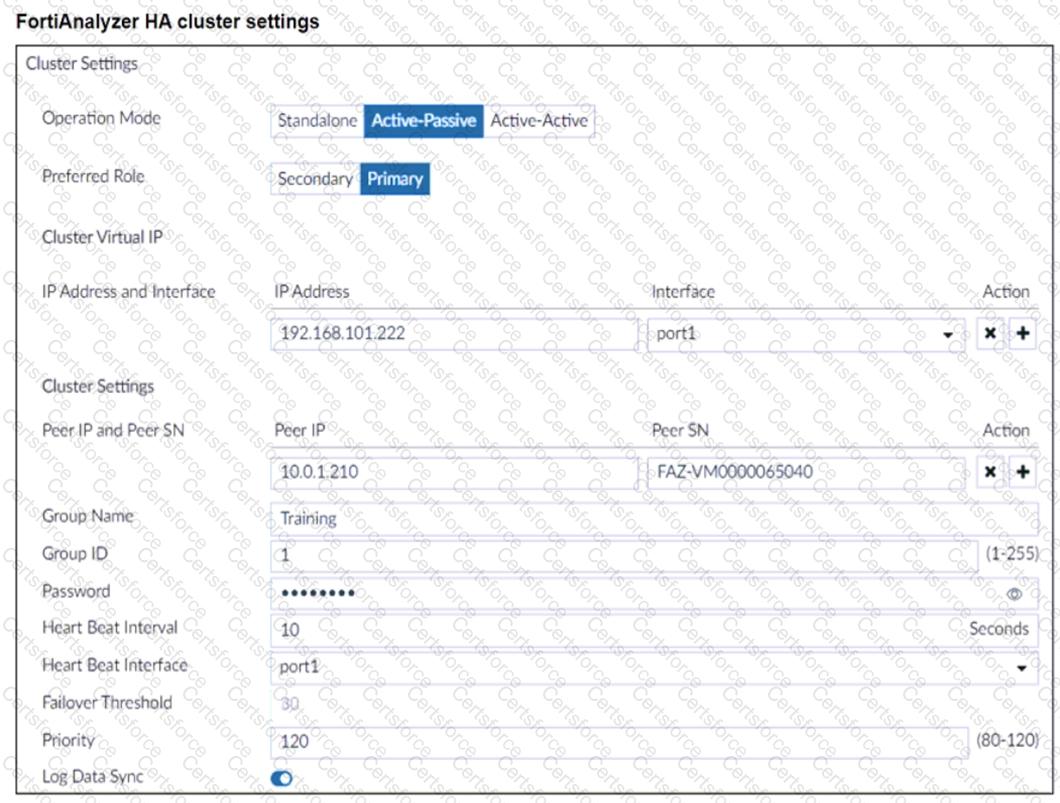Which two statements regarding ADOM modes are true? (Choose two.)
For proper log correlation between the logging devices and FortiAnalyzer, FortiAnalyzer and all registered
devices should:
Which daemon is responsible for enforcing the log file size?
When you perform a system backup, what does the backup configuration contain? (Choose two.)
How does FortiAnalyzer retrieve specific log data from the database?
Refer to the exhibit, which shows the HA configuration settings of a FortiAnalyzer device.

The administrator wants to join this FortiAnalyzer to an existing HA cluster. What can you conclude from the configuration displayed?
FortiAnalyzer reports are dropping analytical data from 15 days ago, even though the data policy setting for
analytics logs is 60 days.
What is the most likely problem?
An administrator has moved FortiGate A from the root ADOM to ADOM1. However, the administrator is not able to generate reports for FortiGate A in ADOM1.
What should the administrator do to solve this issue?
What are two benefits of using fabric connectors? (Choose two.)
Which two statements about log forwarding are true? (Choose two.)